Introduction
- The contemporary world witnesses global youth distress and unrest.
- Coupled with family hardship, youths are engaging in risky activities.
- Medical practitioners have felt the concern to find possible solution.
- Milton Erickson spurred emergence of Brief Strategic Family Therapy.
- Since 1960s-70s, SFT has proven imperative in curbing youth unrest.
- However, little remains known about its functionality.
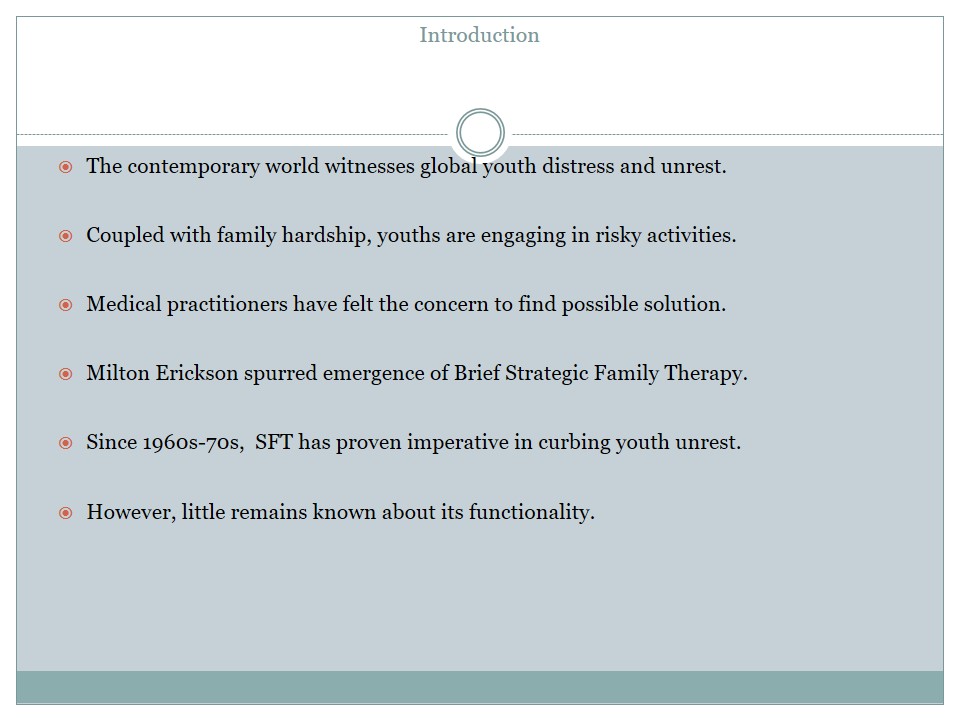
Developers of SFT : Jay Haley & Cleo Madanes
- With no clinical credentials, Jay Haley & Cloe Madanes were the developers of SFT.
- Jay Haley initially started from his writing which went through terrible sarcasm.
- Jay joined Salvador at the Philadelphia Child Guidance Clinic 1967.
- Jay met Cloe Madanes in 1976, when they founded Family Therapy Institute.
- In 1995, relocated to English and finally died in 2007, leading a blueprint in therapeutic activities.
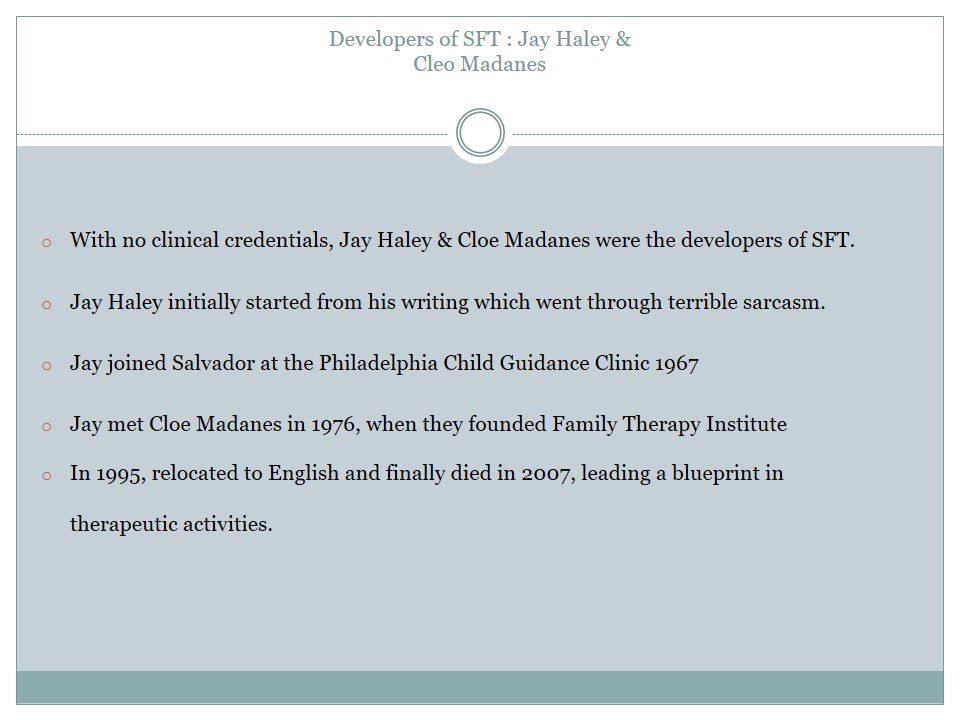
Goals of Strategic Family Therapy
- SFT is a 12 sessions family-treatment model for youth with behaviour problems (Robbins & Szapocznik, 1999).
- SFT approach rests upon the notion that families possess enduring power to change teenagers.
- The approach normally targets families with children possessing antisocial behaviours.
- SFT processes includes brief therapy, problem assessment, interactional, goal setting, and task-setting stages.
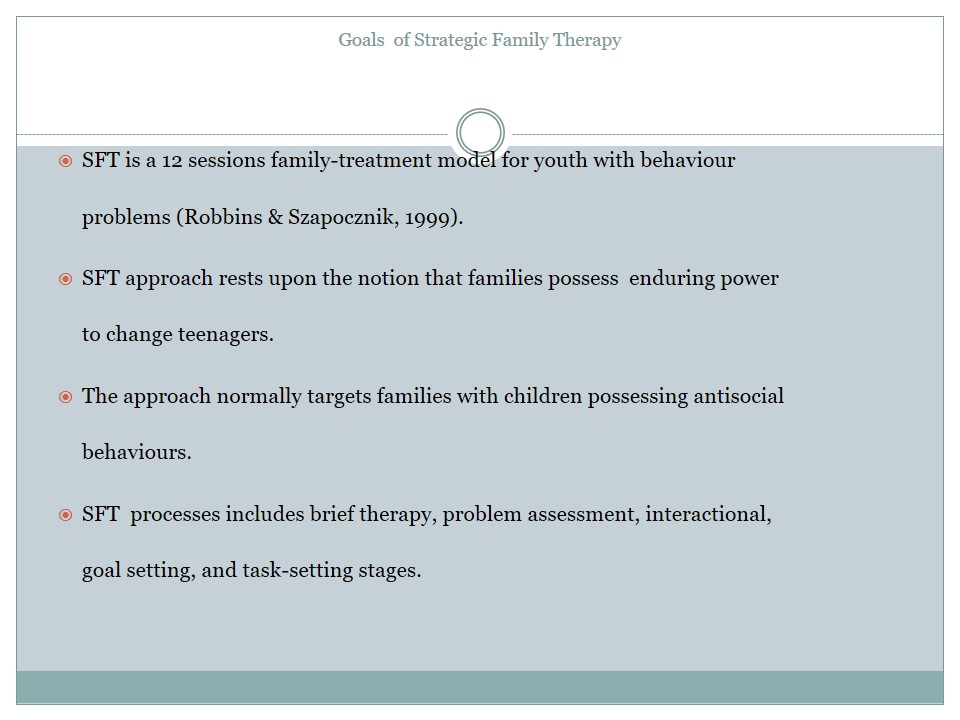
Brief Therapy Stage
- It deals with what kind of behaviours have been involved in family member interactions and the circumstances on how they occur.
- It begins with critical examination of family relationship factors including family interaction and family structure.
- “SFT process responsibly identifies and ameliorates patterns of interaction in the family system relating to behavioural symptoms” (Santisteban et al., 2012, p.260).
- This is where therapists and counsellors examine adolescent attitude and behaviour in the process known as ‘system focus’
- Measurable nature of interactions including communication, including verbal, emotional maladaptive behaviours can be fixed from here.
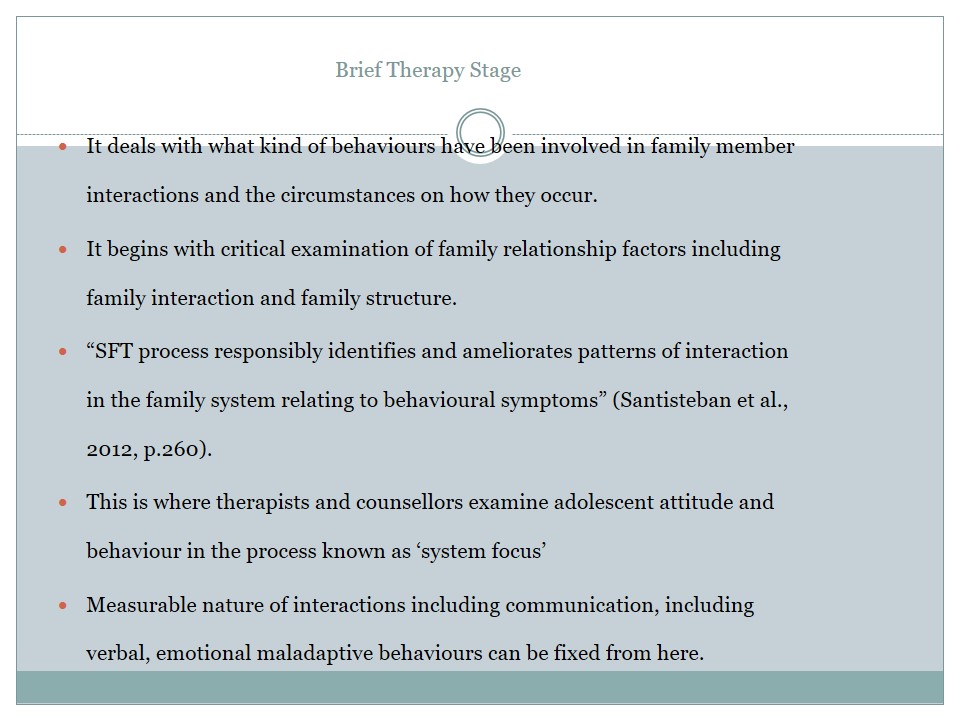
Problem Assessment Stage
- After comprehensive examination family interaction in SFT process, determining the problems is the next stage.
- The therapist and the family counsellor as mentioned earlier play the most significant part and in fact the achievement and results.
- Together with the family, there needs to be cooperation between the family and the problem-solving team.
- This stage primarily exists to determine possible behavioural factors that may hamper the therapist from conducting the SFT process.
- Also, it enables therapists and counsellors to set possible solutions that may fix certain behavioural matters that affect cohesion.
- Problem examination is primarily the responsibility of the therapist with the assistance of the family counsellor.
- Problem diagnosis may involve a continuum of activities between the therapist, the counsellor and the participants.
- The diagnosis process also goes hand in hand with examining interactional patterns since such problems are what attribute to conflicts.
- The therapists undertakes assessment of psychological factors like attitudes, beliefs, intelligence levels and even psychopathology.

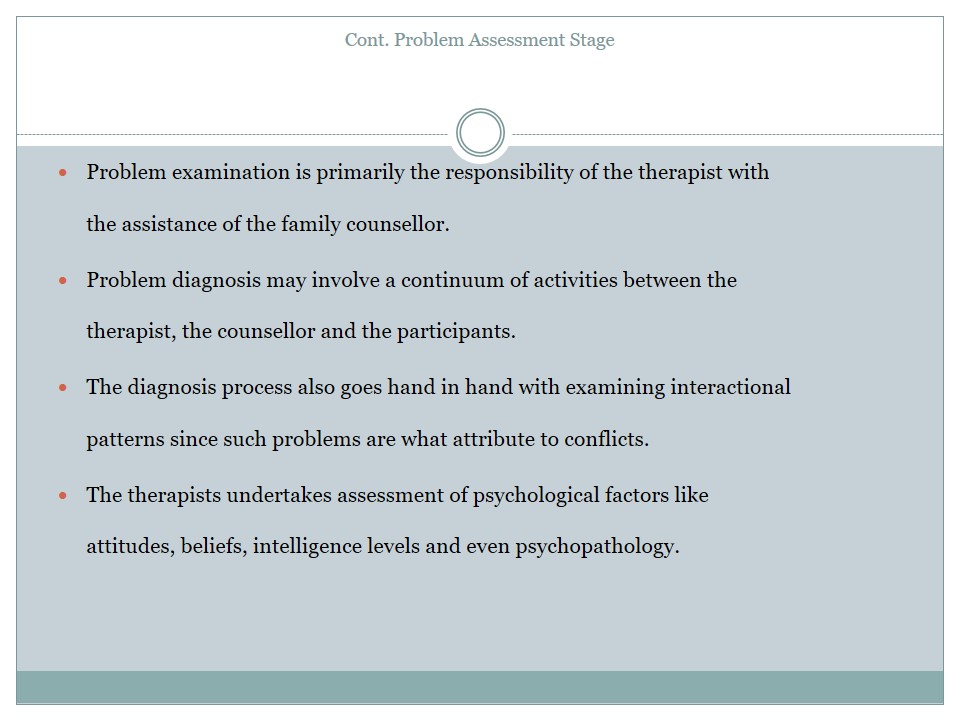
Interactional Stage
- The SFT as described earlier is a systematic approach that requires understanding of all processes.
- After comprehending the problem assessment process and how it significantly influences interaction interactional stage emerges.
- While undertaking the procedural events in , one will notice that each stage of the process proceed in subsequent manner.
- Therefore, it is after determining possible problems affecting the interactional patterns that cohesion begins to strengthen.
- This juncture discusses disagreements against certain aspects among participants that significantly affects cohesion amongst them.
- The interactional stage principally entails the therapist bringing the family together by discussing their problems harmoniously.
- Therapists develops a change strategy that enables them capitalise certain strengths that help them correct problematic relations.
- SFT evaluates the manner of a family’s conflict settlement and comes up with certain intervention measures.
- The therapist with the aid of the counsellor may sit down to determine well planned interventions.
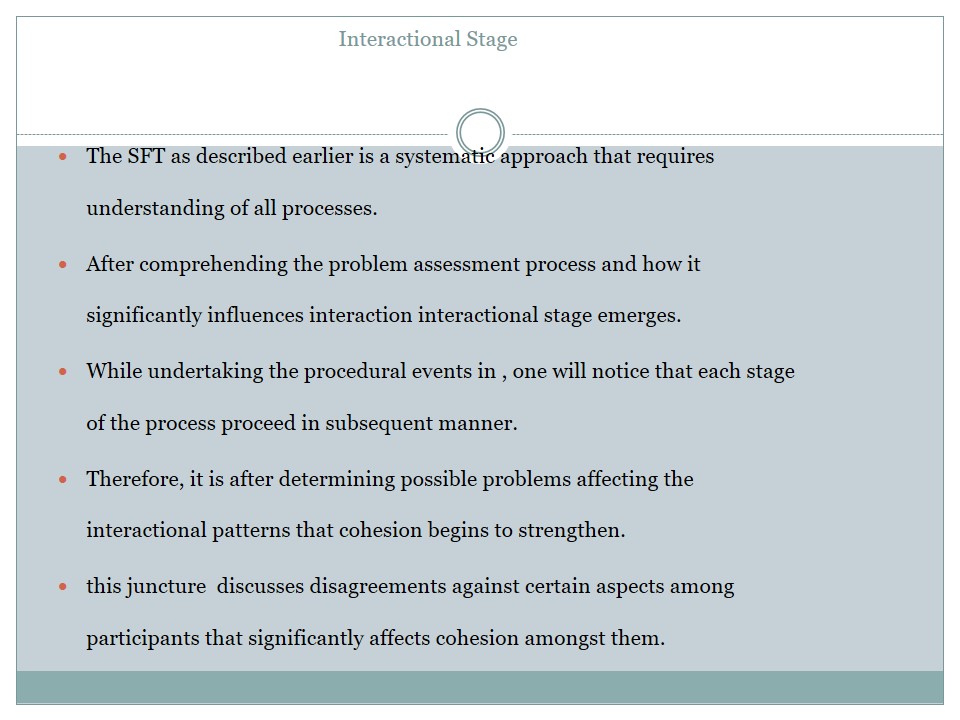
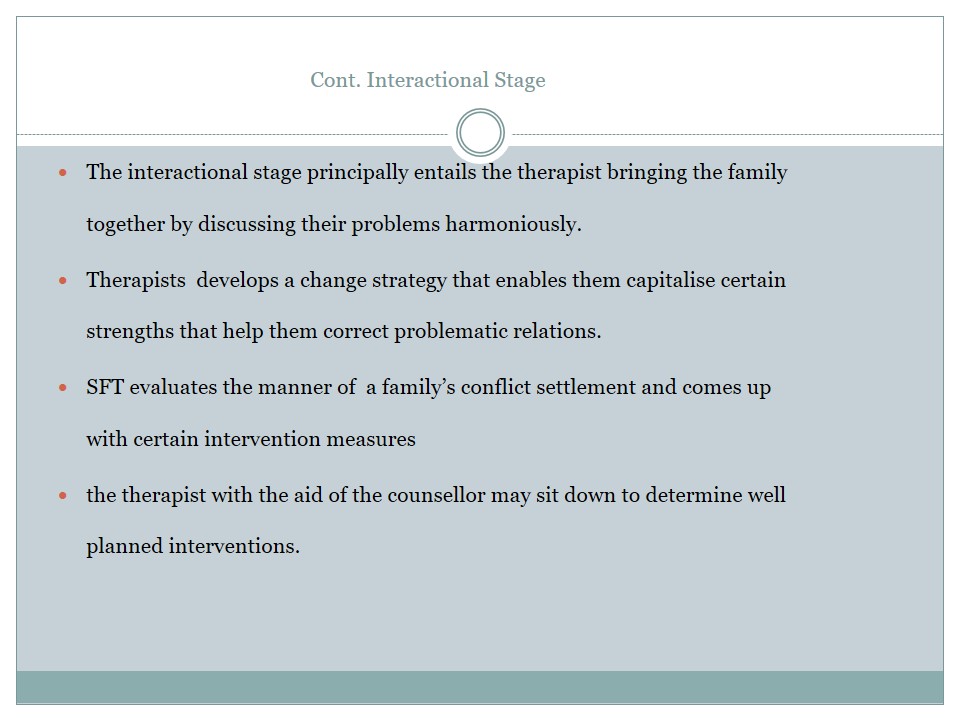
Goal Setting Stage
- After extensively discussing problems and sentiments between family members, a positive climate continues to grows.
- Each family is unique and this uniqueness comes out when its members interact.
- From here, family members with the aid of the therapist and the counsellor understand what they need to address as a family.
- This is where the stage pertaining goal setting emerges with the aim of highlighting specific issues discussed.
- During the goal setting process, the therapist and family engage in examining circumstances leading to behavioural problems.
- Strategically, this section may also involve issues pertaining to integrating protective measures towards family relationship (Szapocznik, 2012).
- Depending on impelling factors, of certain issues, the therapist can formulate an objective targeting eradicating drug abuse.
- If its biological aspects such as the living environment, the objectives may focus on addressing family related matters.
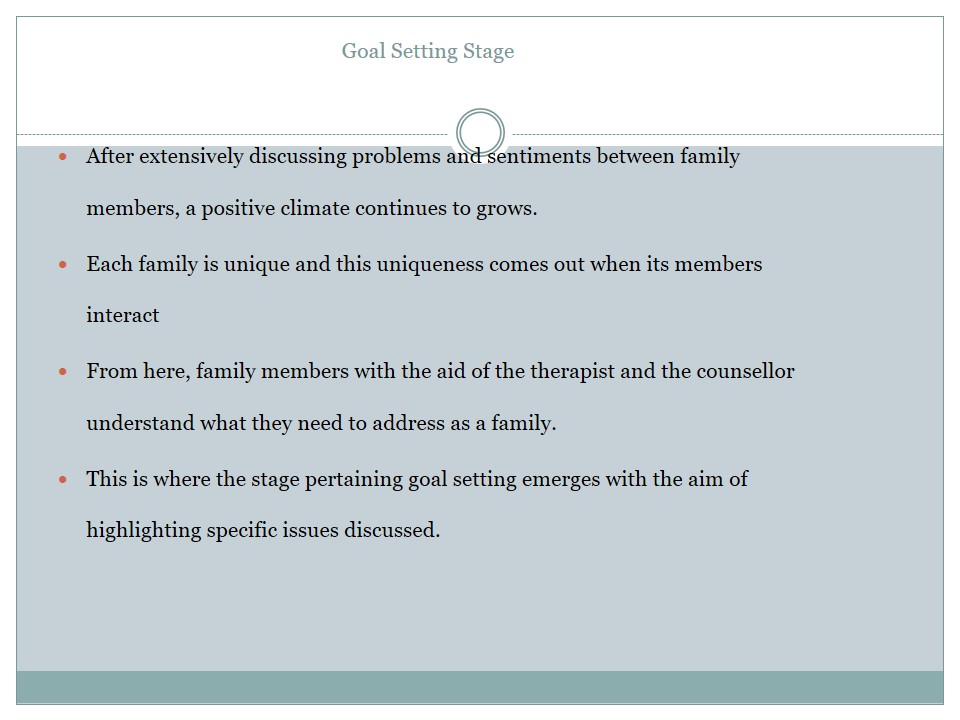

Task-setting Stage
- This is the final stage after ensuring that the all procedures have exhausted all the important steps involved.
- This finalising process does not exclude anyone and in fact requires attention of every member involved in the process.
- This is a phase that entails putting the therapist into task of designing, developing and implementing desirable change strategies.
- The plight and sentiment of each member must receive substantial attention while the therapist considers the interventions to incorporate.
- More often, therapist may include reframing approaches that aim at reducing negativity associated with certain members.
- Reframing serves to turn negativity into positivity.
- Under restricting of behaviour where reframing fits; joining, diagnostic enactment, tracking through psychological counselling.
- Where psychological medical interventions are significant the therapists should consider diagnosing recommending for the same.
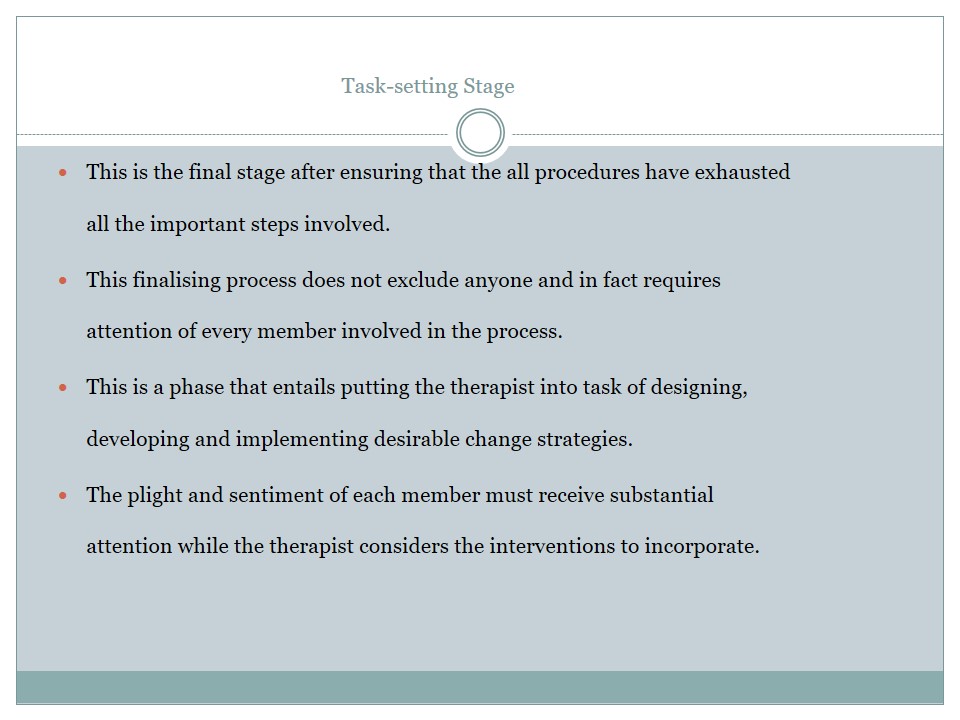
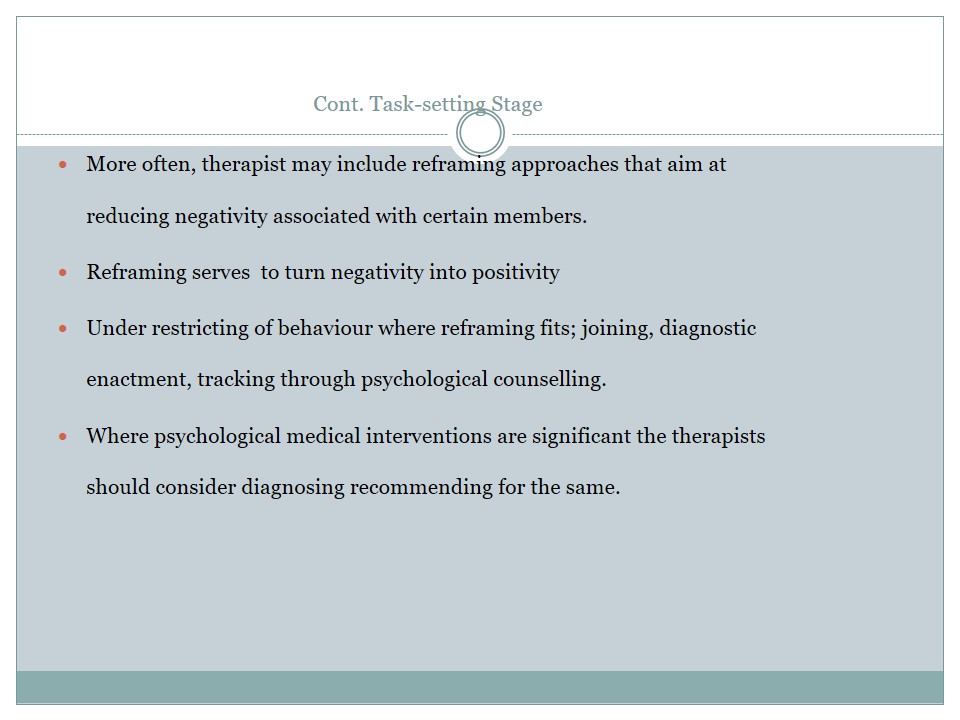
Interventions in SFT
- When the strategy manages to identify a problem within a family, the therapist recommends certain interventions .
- Interventions recommended in SFT are normally solution centered and practical in their application.
- Among the common interventions in SFT , prescribing the symptoms, relabeling and paradoxical interventions are common.
- In prescribing the symptom, the therapists tries to explain specific symptom elements to the family to enhance understanding of its impact.
- The prescribing process is also the diagnosis process.
- Relabeling or reframing as earlier stated is undertaken during the SFT sessions by therapist to change certain perceptions on symptoms.
- Finally, the last intervention is paradoxical interventions, which entail changing family’s low expectations.
- All this helps the therapist to make critical judgments about the problems and resolve them amicably.
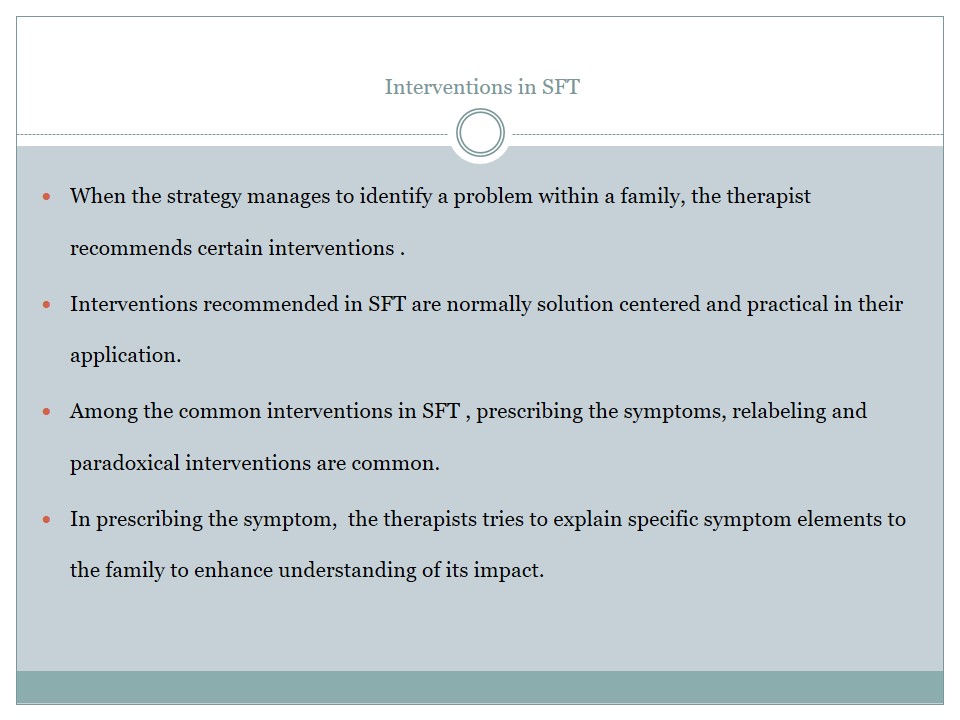
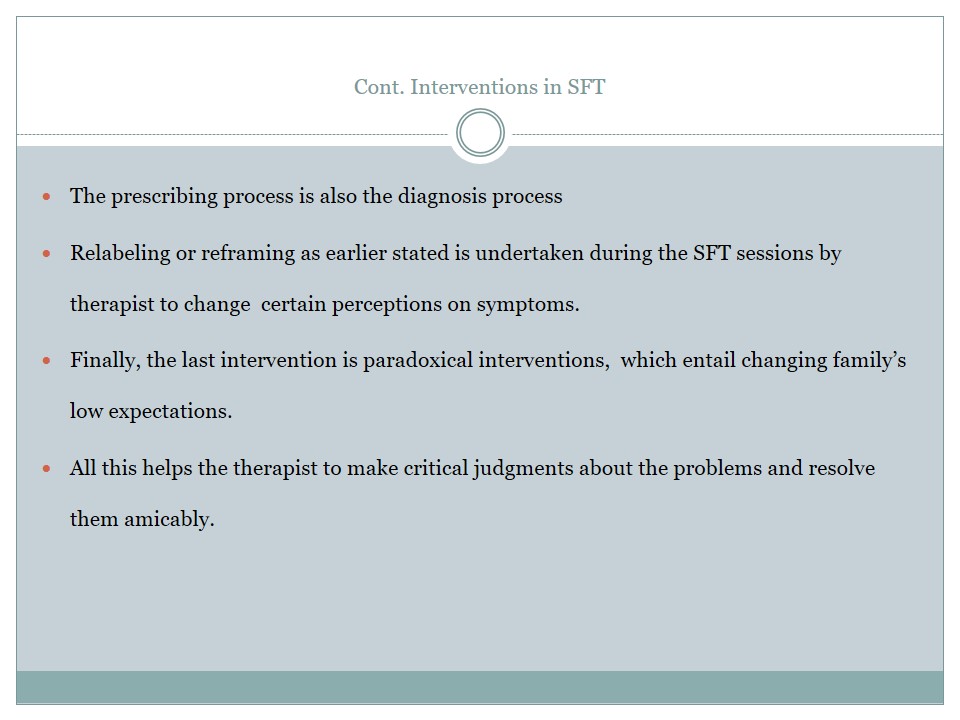
Triangulation
- Triangulation can be another imperative strategic intervention technique in family therapy.
- It’s a situation where a conflict between two family members can be solved by diverting the tension between them to another family member.
- Though it is an unhealthy interaction technique used in the counseling process, it may significantly improve family rapport.
- The third member helps to redirect the tension existing between two involved family members.
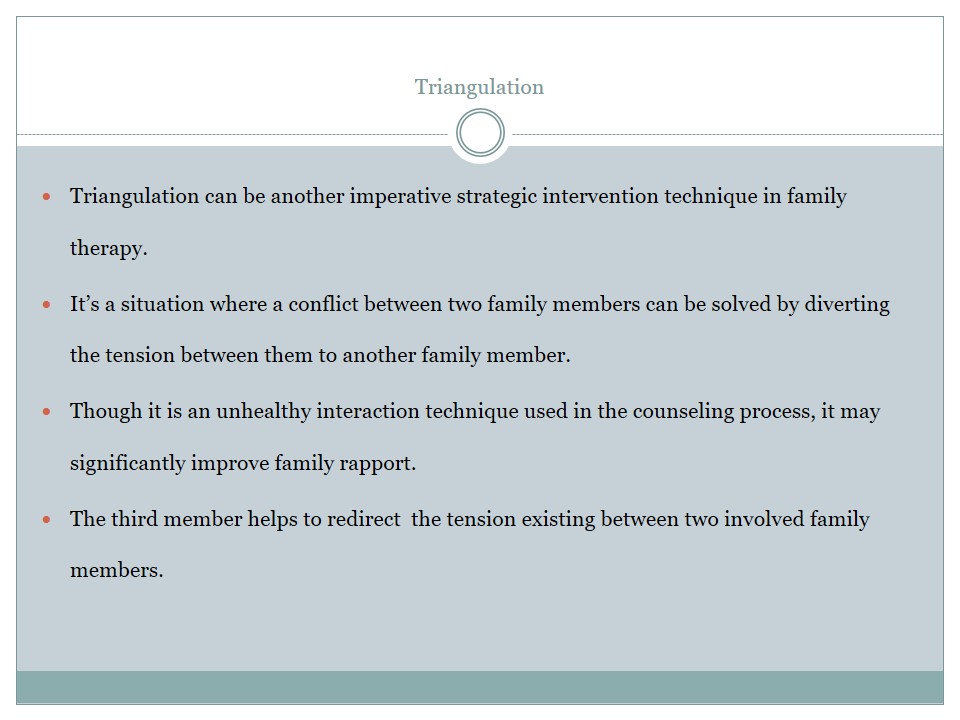
Reference List
Robbins, M., & Szapocznik, J. (1999). Brief Strategic Family Therapy. Web.
Santisteban, D., Suarez-Morales, L., Robbins, M., & Szapocznik, J. (2012). Brief Strategic Family Therapy: Lessons Learned in Efficacy Research and Challenges to Blending Research and Practice. Fam Process, 45(2), 259-271.
Szapocznik, J., Schwartz, S., Muir, J., & Hendricks, C. (2012). Brief Strategic Family Therapy: An Intervention to Reduce Adolescent Risk Behaviour. Couple and Family Psychology: Research and Practice, 1(2), 134 –145.